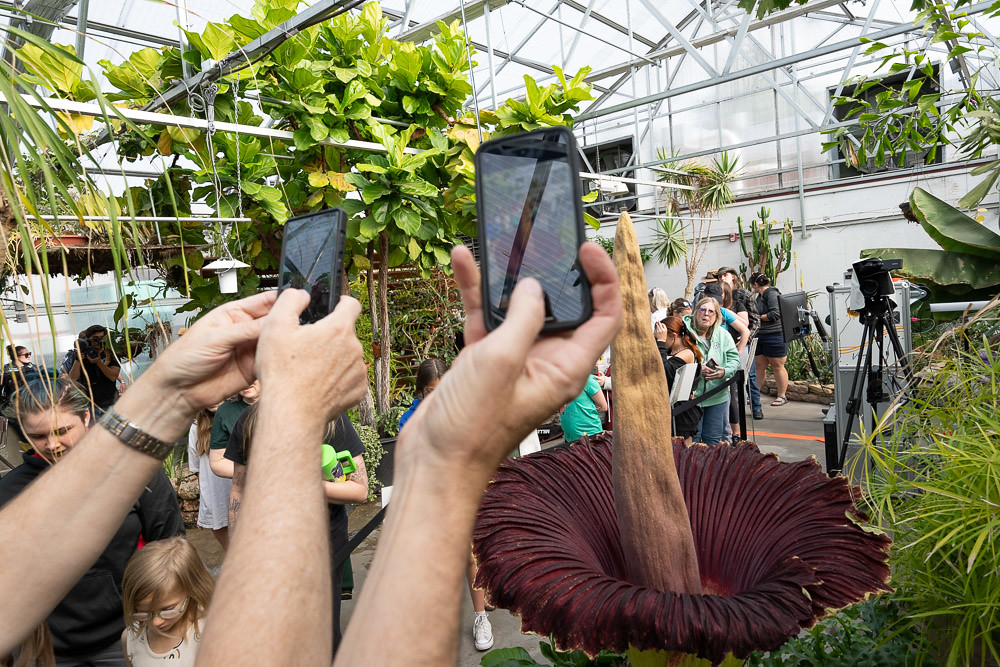
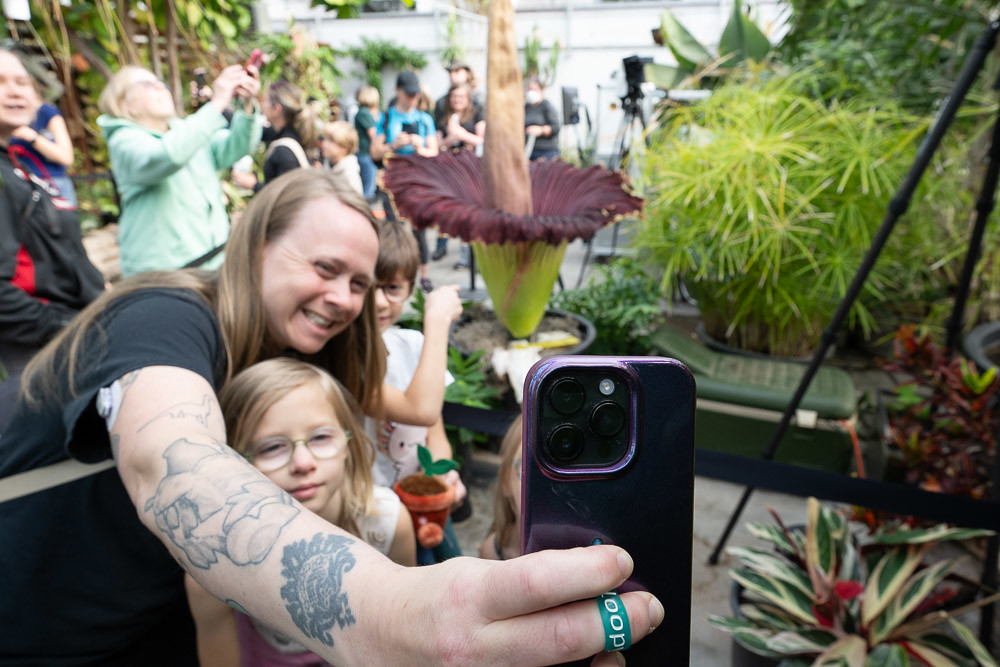

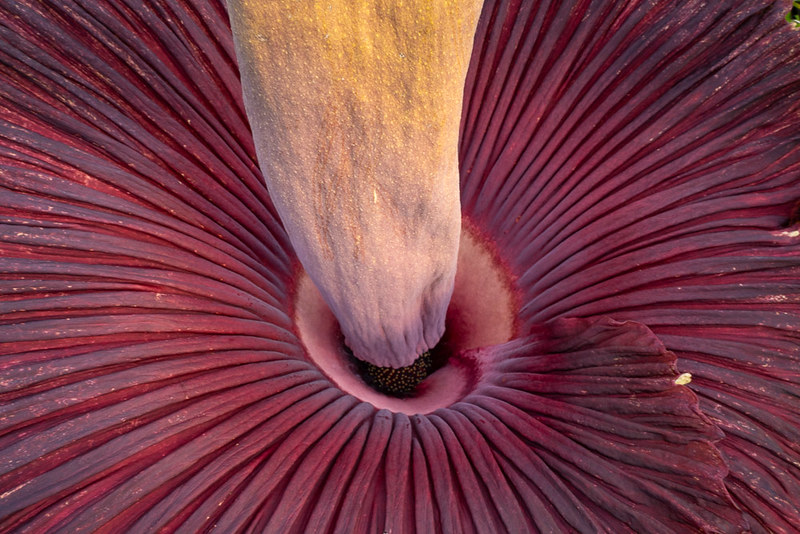

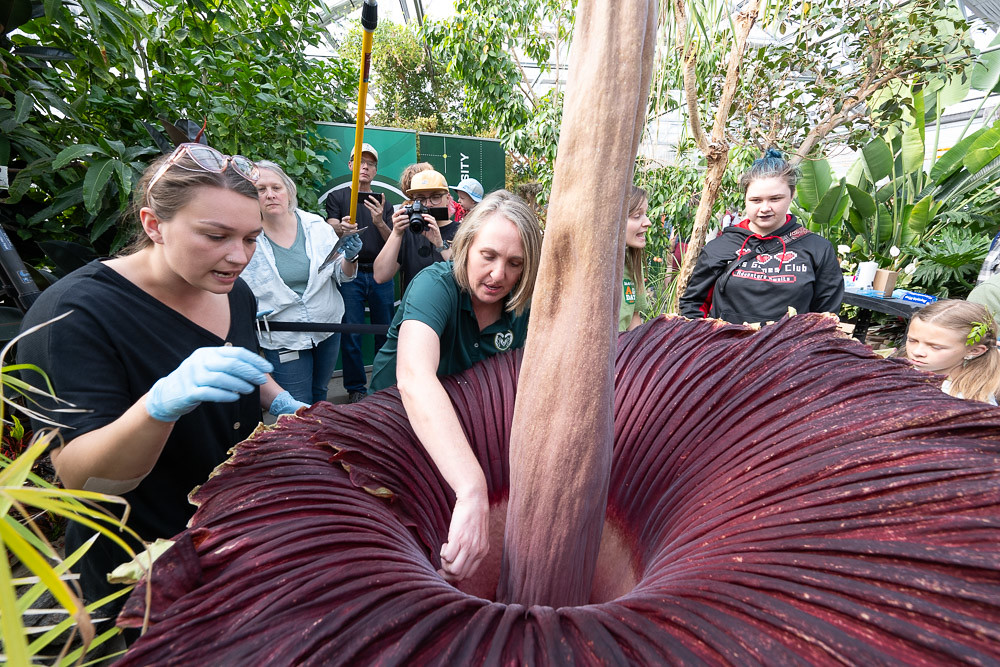
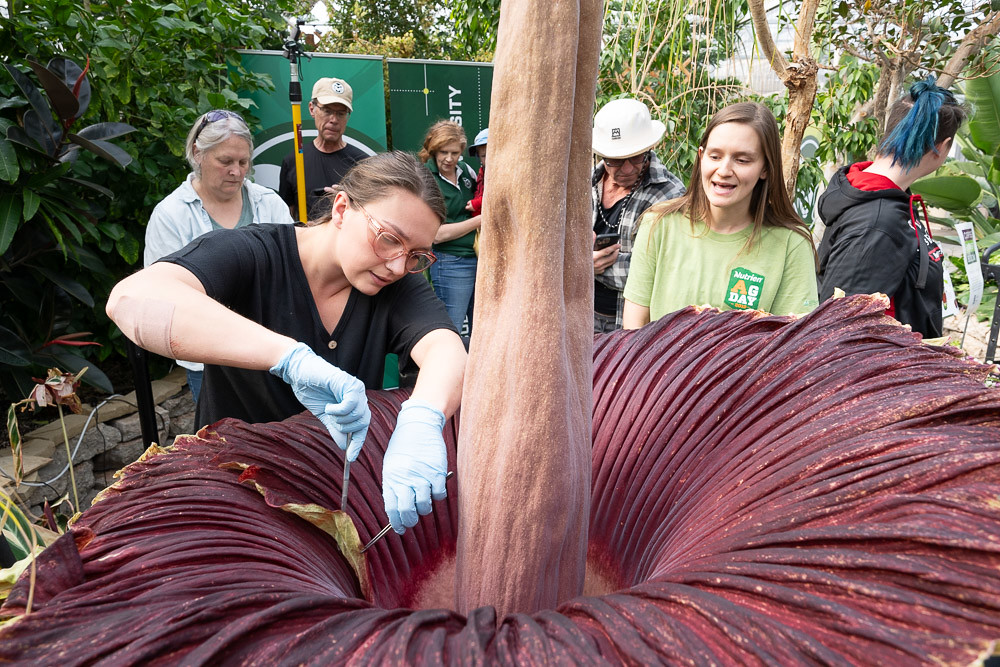
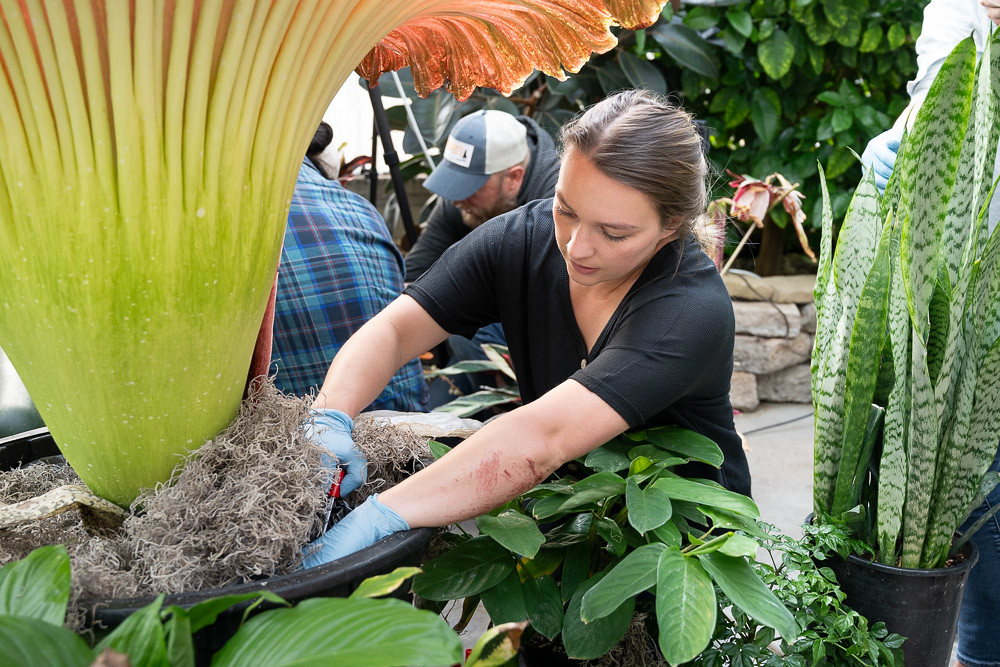
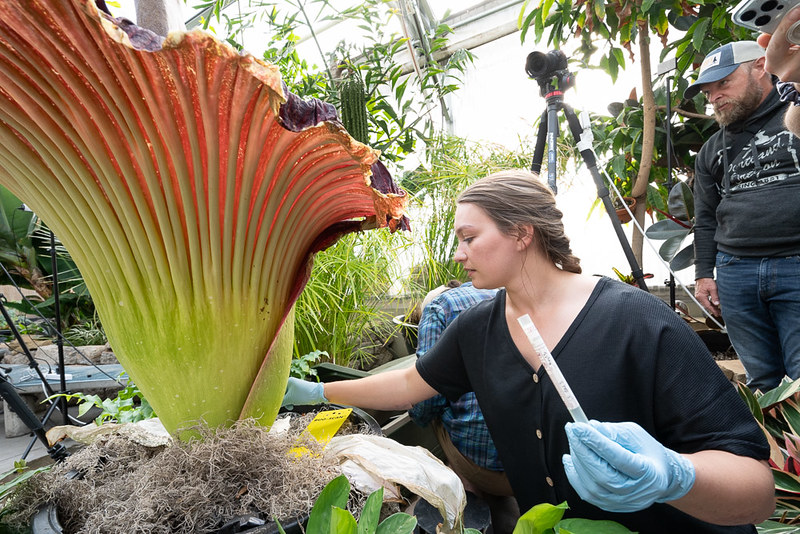
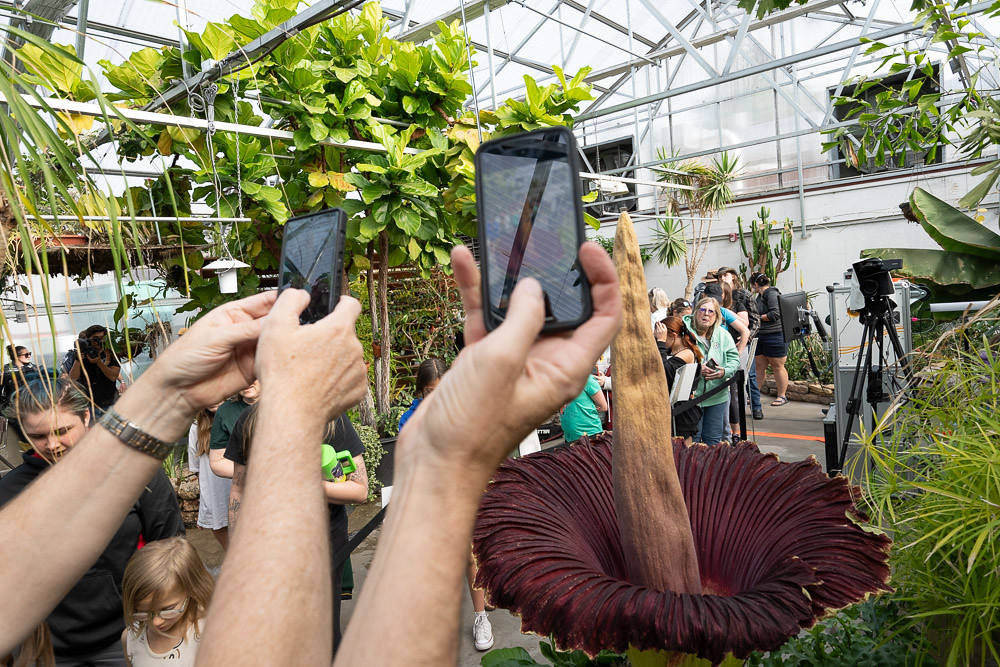
Back in 2016, Colorado State University Plant Growth Facilities Manager Tammy Brenner brought back what might be the coolest piece of conference swag ever: a corpse flower named Cosmo.
Now, after eight years of care in the College of Agricultural Sciences’ Conservatory, it finally bloomed the evening of Saturday, May 25.
“Cosmo came out of dormancy around three weeks ago, and we didn’t expect anything exciting,” Brenner said last week. “But then two weeks ago, it started looking a little bit more full, a little bit more plump. It started growing and shooting out stalks, and we realized something really big was about to happen.”
While in bloom, Cosmo emitted a putrid odor that has been compared to the smell of decaying flesh. This will become less pronounced after the first 12-24 hours, and the bloom itself will only last for around two to three days.
After that, Cosmo the corpse flower won’t bloom again for another three to five years.
“This is a rare occasion and a big deal because it will be the first bloom for the corpse flower here at CSU,” Brenner said.
Hundreds of people from Fort Collins and beyond flocked to CSU to see Cosmo in action, with a line winding along the block on Sunday morning.
“I’ve been watching the live stream religiously to be like ‘where’s it at? Do we need to get in line, should we camp?'” said Shiv Tuck.
CSU alumnus Bill Zanca, who lives in Breckenridge, was able to see and smell Cosmo while in Fort Collins visiting his daughter over the holiday weekend.
“I’m pretty struck by the short amount of time between when it was not fully open and when it bloomed,” he said. “It’s such a gorgeous plant – it’s just amazing to see such a thing. I’ve never seen a plant like that before, so that’s pretty awesome.”
How to see the corpse flower
When: The bloom began to occur on Saturday evening. It is expected to stay in bloom for 24-48 hours. Cosmo will be open from 9 a.m. to 3 p.m. each day that the bloom occurs, so likely Sunday, May 26, and Monday, May 27.
Where: The Plant Growth Facility Conservatory at 1241 Libbie Coy Way, Fort Collins, CO, 80523.
Parking: Corpse flower visitors should park in the South College Avenue Garage, 121 W. Pitkin St., Fort Collins, CO, 80523. The University Station for the MAX line is within walking distance of the PGF. To reach the PGF entrance from the parking garage, walk west on Pitkin, and follow the signs for the corpse flower viewing line. Only the west doors provide access to the viewing area. Visitors should be prepared to wait in line.
What is a corpse flower, and why does CSU have one?
The corpse flower, or Amorphophallus titanum, is the largest unbranched inflorescence (or collection of flowers acting as one) in the plant kingdom. They can grow up to 8 feet tall; and during bloom, their corpse-like smell lures pollinators like carrion beetles and flies.
The corpse flower is native to Sumatra, Indonesia, and there are estimated to be fewer than 1,000 individual specimens in the wild, according to the U.S. Botanic Garden.
Numerous botanical gardens and universities like CSU have begun cultivating corpse flowers to preserve its genetics and learn more about how these enigmatic plants thrive.
Brenner received Cosmo during a plant swap at the annual Association of Educator and Greenhouse Research Curators conference. Cosmo’s “parents,” Maudine and Woody, both came from Ohio State University and were “born” on May 24, 2013.
Brenner said life was fairly routine during Cosmo’s first few years at CSU. Throughout the year, the corpse flower produces a giant stem-like structure and a leaf but goes dormant in the fall when students return to campus from summer break.
“It looks a little sad, so we usually hide it in the back so no one thinks we’re killing it,” Brenner said.
This year will be different, and Brenner expects people from around the community to pay Cosmo a visit while he’s in full bloom. Other corpse flower blooms at places like the Denver Botanic Gardens have attracted large crowds, and the conservatory will open its doors for public viewing from 9 a.m. to 3 p.m. each day it is in bloom.
Previously, Brenner said there was a slim chance Cosmo might not bloom at all.
“At the end of the day, plants are still unpredictable, but with the data we have, we’re eagerly awaiting the bloom,” Brenner said.
Just like how Brenner received the corpse flower seed at a conference all those years ago, she hopes to return the favor and share Cosmo’s genetics with other institutions across the country so they can have their own corpse flowers.
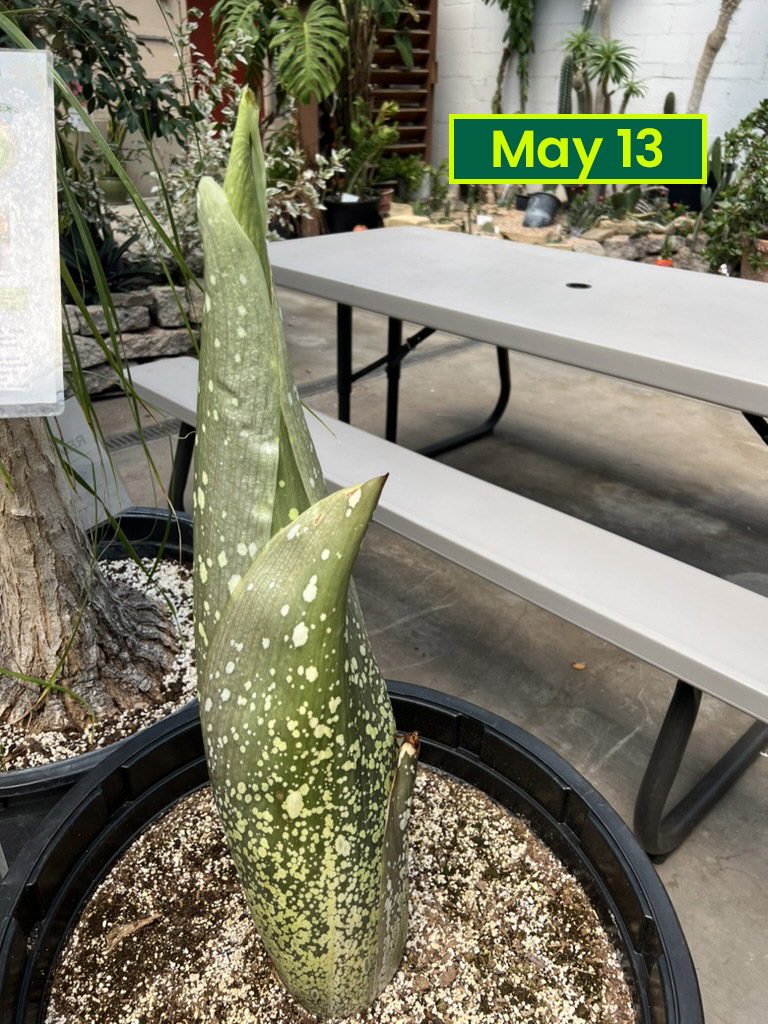
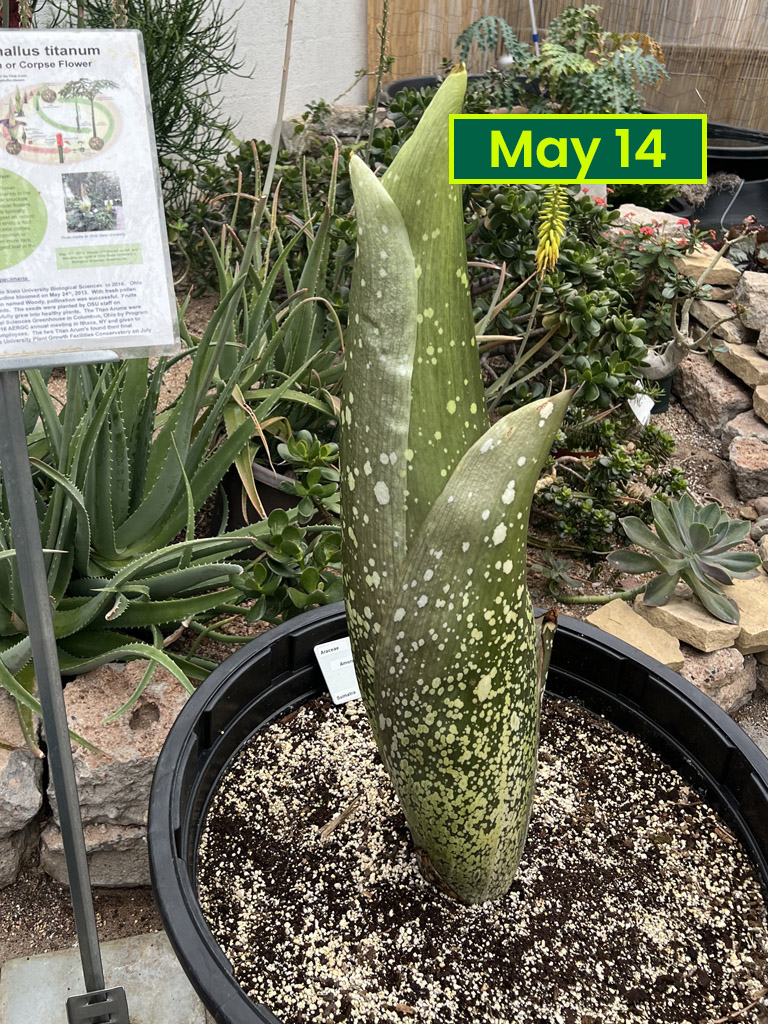



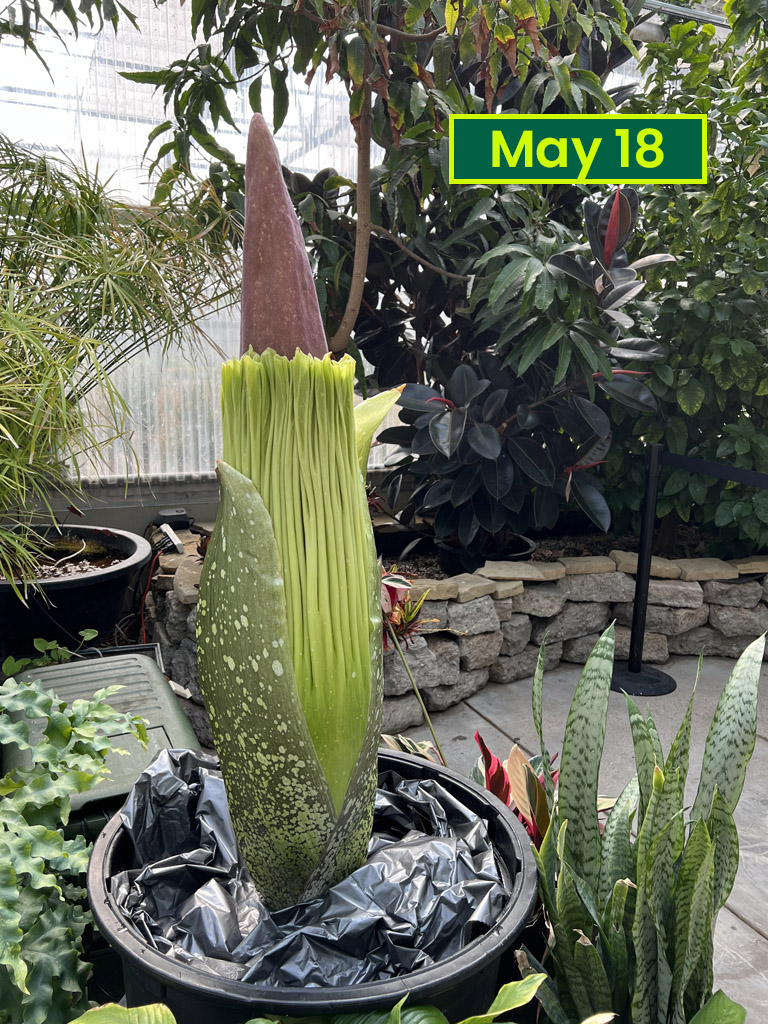

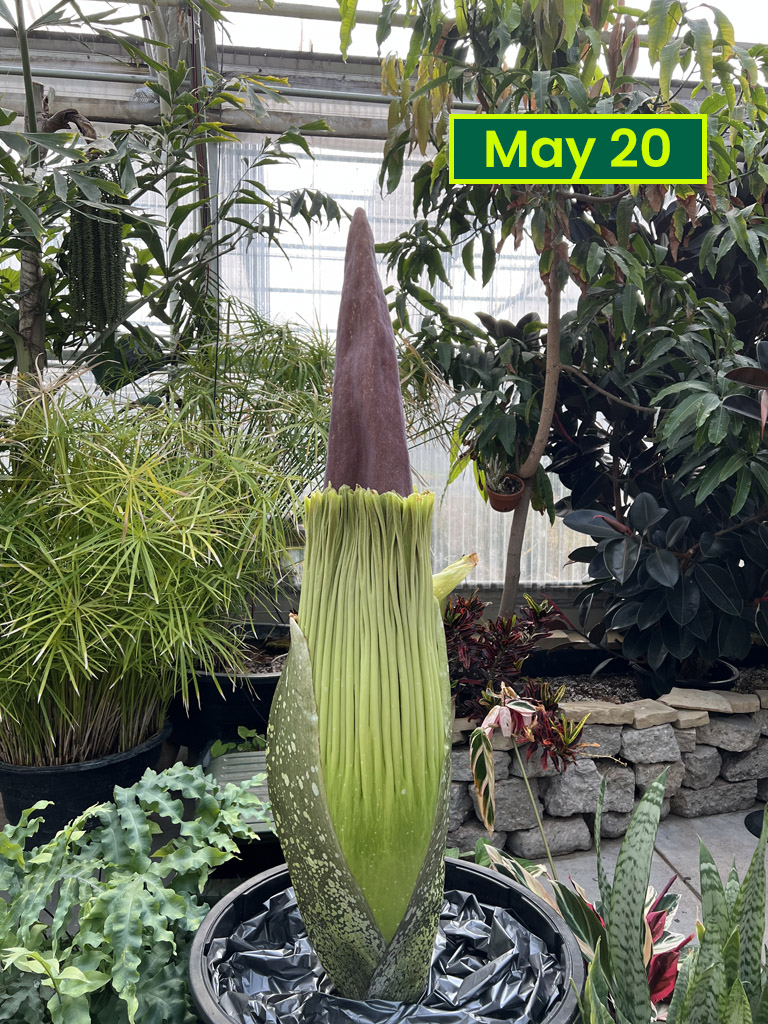
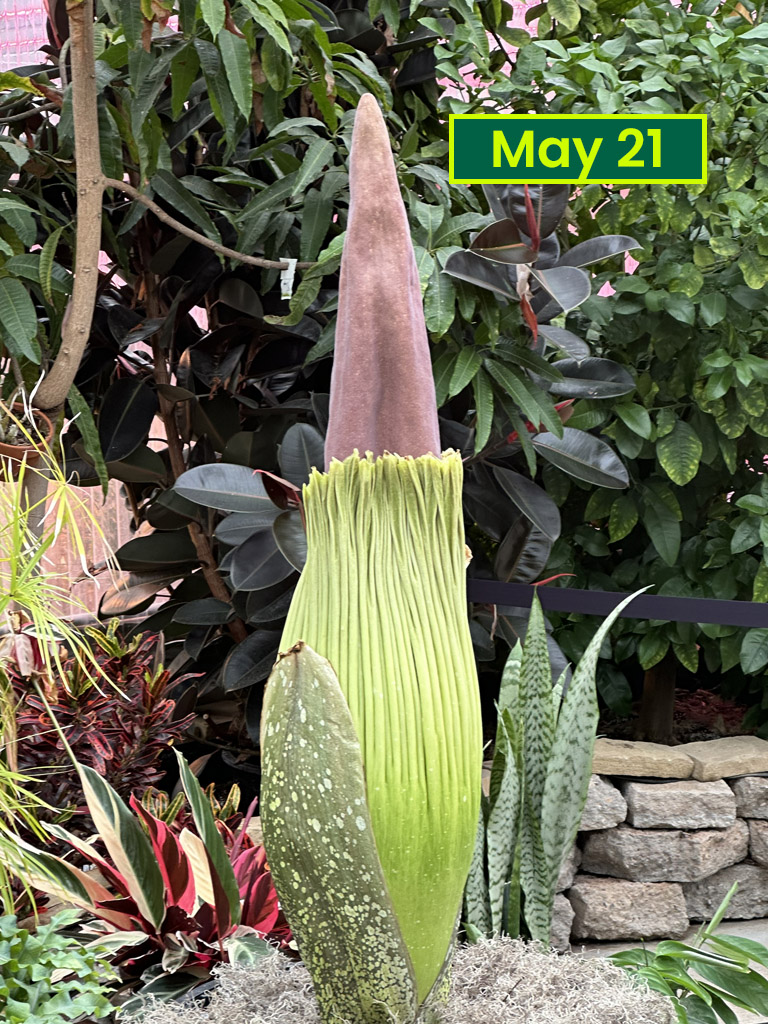
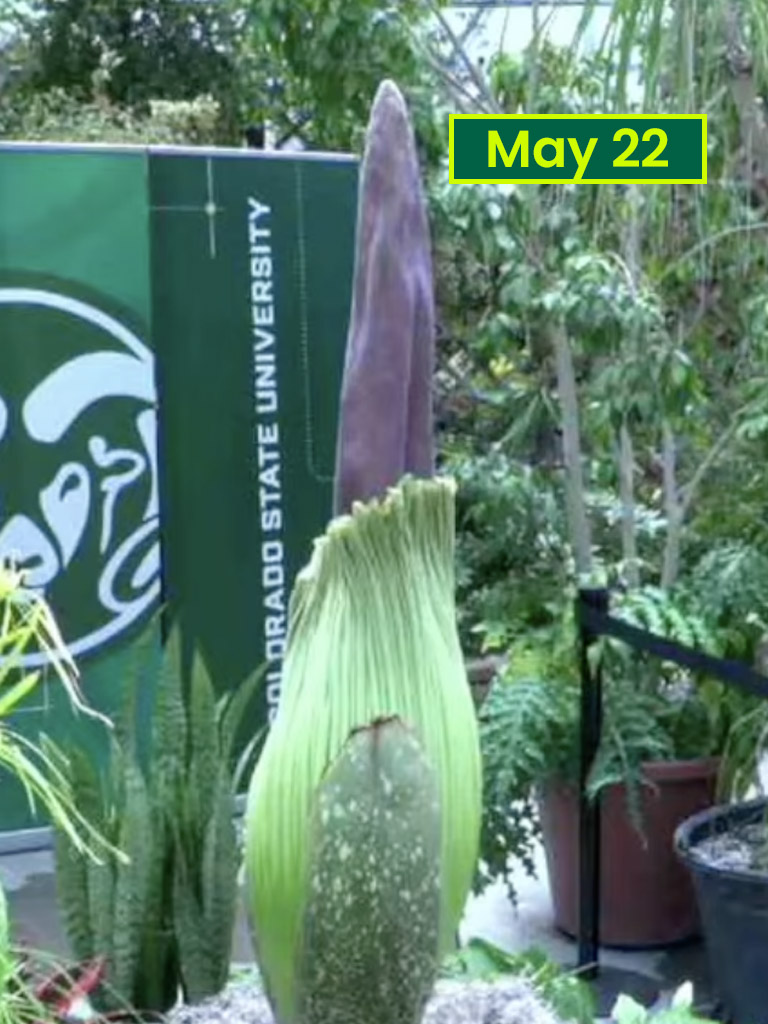

Scroll through this image carousel for a look at how Cosmo the corpse flower has grown since May 13.
Year-round sights at the PGF Conservatory
Cosmo the corpse flower is one of the dozens of plants inside the Plant Growth Facilities Conservatory, which is located in a greenhouse on the east end of the CSU campus in Fort Collins.
It’s a key piece of the network of 11 Agricultural Experiment Stations scattered across the state, and the starting point for research around vital Colorado crops like corn, hemp, sorghum and wheat.
In addition to being home to numerous research operations, Brenner said the PGF Conservatory is truly a place for the community to enjoy, hosting everything from painting and drawing classes to writing workshops. It’s home to an assortment of plants that aren’t typically seen in Colorado, ranging from banana and pomegranate trees to lush ferns to multiple desert plants.
“A lot of our international students get really excited to be here because some of our plants make them feel like they’re at home,” Brenner said.
The conservatory is typically open from around 8:30 a.m. to 4 p.m. during the week and has numerous tables and chairs that allow people to take in the sights and enjoy this hidden gem year-round.
The Plant Growth Facilities team is asking for support to purchase new lighting for their facility so it can continue to be a resource to the public and advance important research.
All gifts to this project benefit the CSU-Agricultural Experiment Station Enrichment fund: col.st/h9X8W.